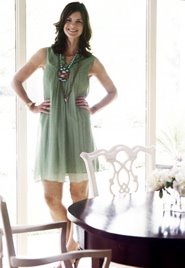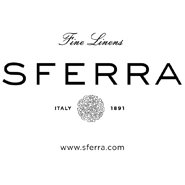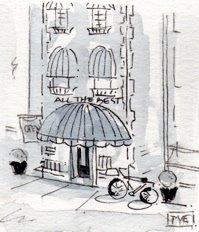
No other drink conjures up the same images of luxury, celebration and pleasure as champagne. As all the other traditional French wine regions struggle to compete with the New World regions, it is the Champagne area alone that stands head and shoulders above the competition.
BOLLINGER
Family-owned and run, Bollinger is a full-bodied, complex and pinot noir-based Champagne.
CANARD-DUCHENE
It’s rumoured that the French are mad for this Champagne. It’s light-bodied, fruity, and slightly sweet.
CHARLES HEIDSIECK
The sophisticated older sibling of Piper-Heidsieck is mature and complex.
The non-vintage Brut Réserve is rich yet dry, with classic brioche flavours.
CRISTAL
The cult Champagne consumed by Hollywood stars and supermodels is made from a slightly higher proportion of pinot noir than chardonnay.
DOM PERIGNON
The original prestige cuvée, launched by Moët in 1936. This is most probably the best know Champagne throughout the world, and some would argue that it’s too overrated. Each vintage has its own character, and most of the grapes still come from vineyards that were owned by the abbey of Hautvilliers in Dom Pérignon’s time.
HEIDSIECK MONOPOLE
One of the least expensive of the famous names. It sells in vast quantities and is simple, fruity, fizzy
KRUG
It is possible to find more expensive bubbly, but there’s no posher name. Grande Cuvée, which Krug calls multivintage rather than non-vintage, is deep, rich, complex and dry.
Fermented in small oak casks, it includes a high proportion of mature reserve wines, and it is aged for much longer than other non-vintages.
LAURENT-PERRIER
The Cuvée Rosé Brut is one of the stars in the Laurent-Perrier range. This champagne is famous for its bouquet, which stems from the careful preservation of the grape's natural fresh red fruit aromas. It’s extraordinary depth and freshness has set the benchmark for rosé champagne around the world.
LOUIS ROEDERER
One of the largest remaining independent Champagne Houses, owned by the Rouzaud family since it was founded in 1776. It is most famous for producing the premium champagne Cristal. Pure with the deep flavours dominated by pinot noir grapes.
MOET & CHANDON
Moët & Chandon is the one of the world's best known and most popular producers of both Champagne and quality sparkling wines from other regions. Moët & Chandon offers a soft, round, easy-drinking style.
PERRIER JOUET BELLE EPOQUE
This champagne is more than just a pretty face. The art nouveau bottle was designed by Gallé in 1902 is as utterly seductive as is the champagne inside. Elegant, creamy and floral.
PIPER-HEIDSIECK
With restyling and four new champagnes last year, there is still some substance in this Champagne. Fresh, fruity and easy to drink; improves if cellared for a year.
POL ROGER
Favoured by Prime ministers, presidents, princes, this Champagne has a serious, rock-solid image. Poised, polished, firm, with floral and creamy flavours.
RUINART
This is the oldest champagne house (1729) and produces extremely good champagnes. If it were better known, it would probably be more expensive.
Fresh with a buttery richness.
TAITTINGER
An elegant champagne that is perfect for any celebration. Perfectly balanced with delicious ripe fruit flavours and at the elegant end of the spectrum.
VEUVE CLICQUOT
From the same luxury-goods group as Moët, this does very nicely by targeting well-heeled customers courtesy of its sponsorship of polo and horse racing.
More pinot noir than chardonnay. Lay it down for a few months to bring out the characteristic buttery flavours.











































































.jpg)





